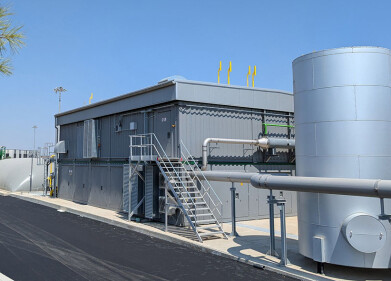Air clean up
Perstorp has set Science Based Targets in line with Paris Agreement
Feb 25 2022
Perstorp Group greenhouse gas emissions reduction targets have been approved by the Science Based Targets initiative, meaning they are consistent with levels required to meet the goals of the 2015 Paris Agreement. The targets covering greenhouse gas emissions from Perstorp’s operations (Scopes 1 and 2*) are consistent with reductions required to keep warming to 1.5°C, the most ambitious goal of the Paris Agreement.
The Science Based Targets initiative (SBTi), a collaboration between CDP, the United Nations Global Compact, World Resources Institute (WRI) and the World Wide Fund for Nature (WWF) defines and promotes best practice in science-based target setting. It also independently assesses companies’ targets.
“Perstorp has a mission to be the sustainable solutions provider,” says Jan Secher, Perstorp Group CEO. “A part of this is setting targets to reduce the impact within various areas, including carbon emissions. Perstorp wants to actively participate in the transition of the chemical industry, and we are convinced that this will also create value and new business opportunities. We have the possibility to make a great positive impact, by driving change, transforming our production, and enabling new solutions that will help our customers providing sustainable products and offerings to the market . This is our commitment, and aligning with the Paris Agreement is a natural consequence of this.”
Perstorp is committed to reduce absolute Scope 1 and 2 GHG emission by 46.2 percent by 2030 from a 2019 base year. The company is also committed to reduce Scope 3 GHG emissions from purchased goods and services, fuel and energy related activities, upstream transportation and distribution, waste generating operations, and end of life treatment of sold products 27.8 percent per ton sold product within the same timeframe. Perstorp’s target for the emissions from its value chain (Scope 3) meet the SBTi’s criteria for ambitious value chain goals, meaning they are in line with current best practice.
Reaching the science-based targets means looking at every aspect of the company to identify possible ways of reducing negative climate impact . Perstorp took an important step towards enabling greenhouse gas emission reductions last December when it began applying Internal Carbon Pricing for Scope 1, 2 and 3. Internal Carbon Pricing is a way to future proof a company by helping to drive investments which improves sustainability and reduces CO2 emissions. It is a mechanism to put an internal price on our CO2 emissions and take this into account in business cases and as the guiding principle for decision making.
“Reaching our science-based targets will require big efforts, including reducing energy consumption at our production sites and shifting to renewable or recycled energy and raw materials sources,” says Anna Berggren, VP Sustainability at Perstorp Group. “The investments and decisions we make today will generate emissions in the long future. Therefore, the informed decisions we make need to take this risk factor into account to support our journey towards our targets in 2030 and beyond. Internal Carbon Pricing is one very concrete way to implement sustainability aspects into our financial decision making process.”.
Events
May 11 2025 Vienna, Austria
May 18 2025 Algiers, Algeria
23rd International Water Management Exhibition
May 20 2025 Prague, Czech Republic
Singapore International Water Week Spotlight 2025
Jun 23 2025 Singapore
Jun 25 2025 Sao Paulo, Brasil














